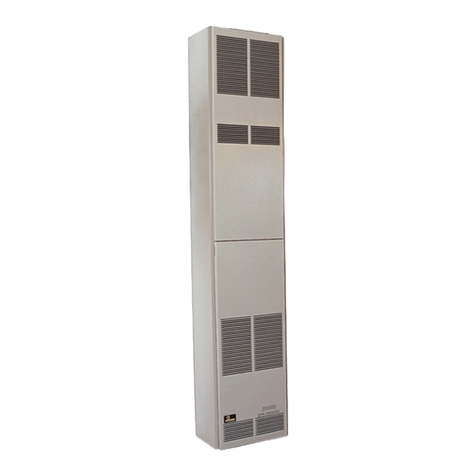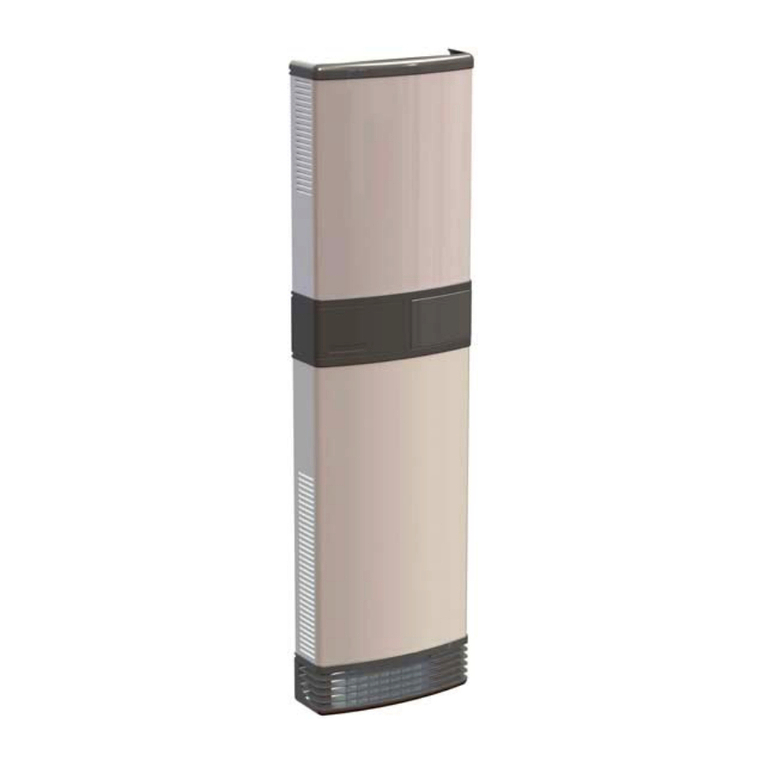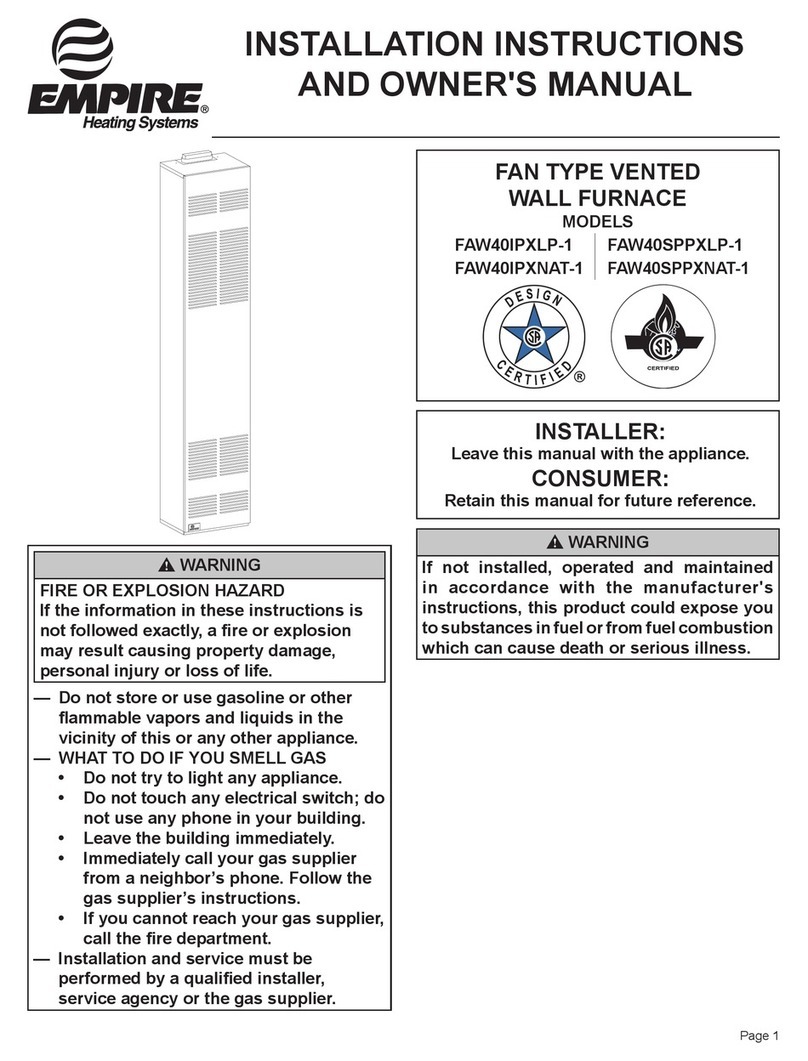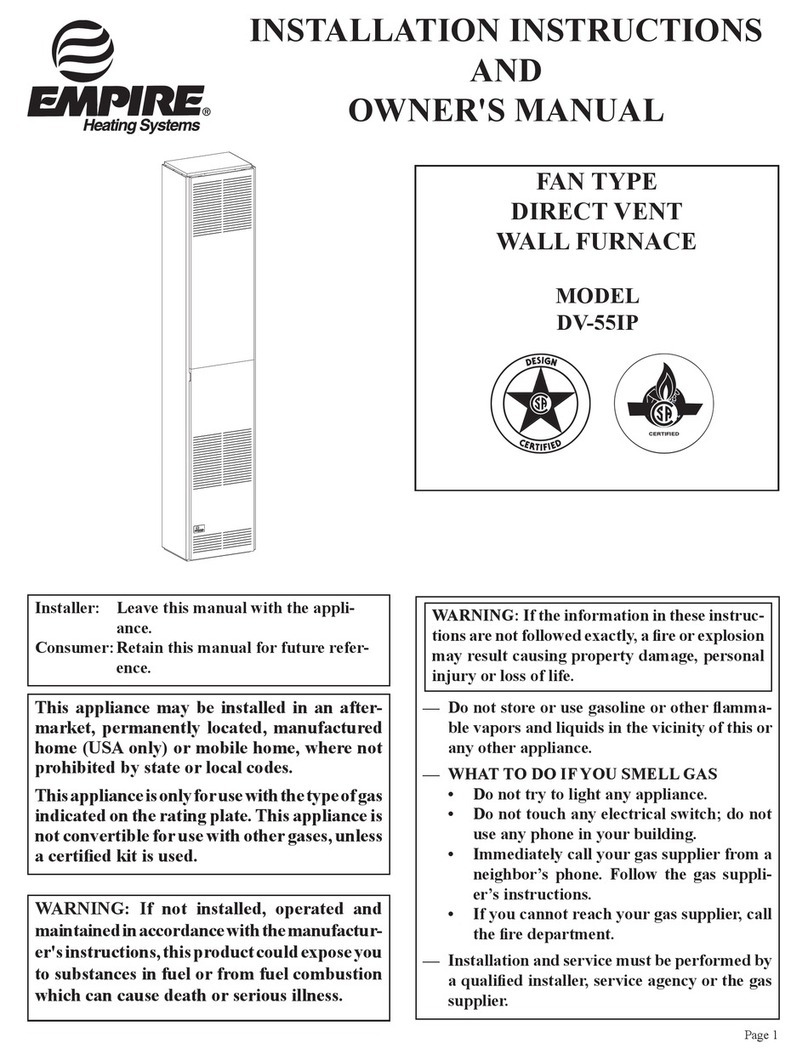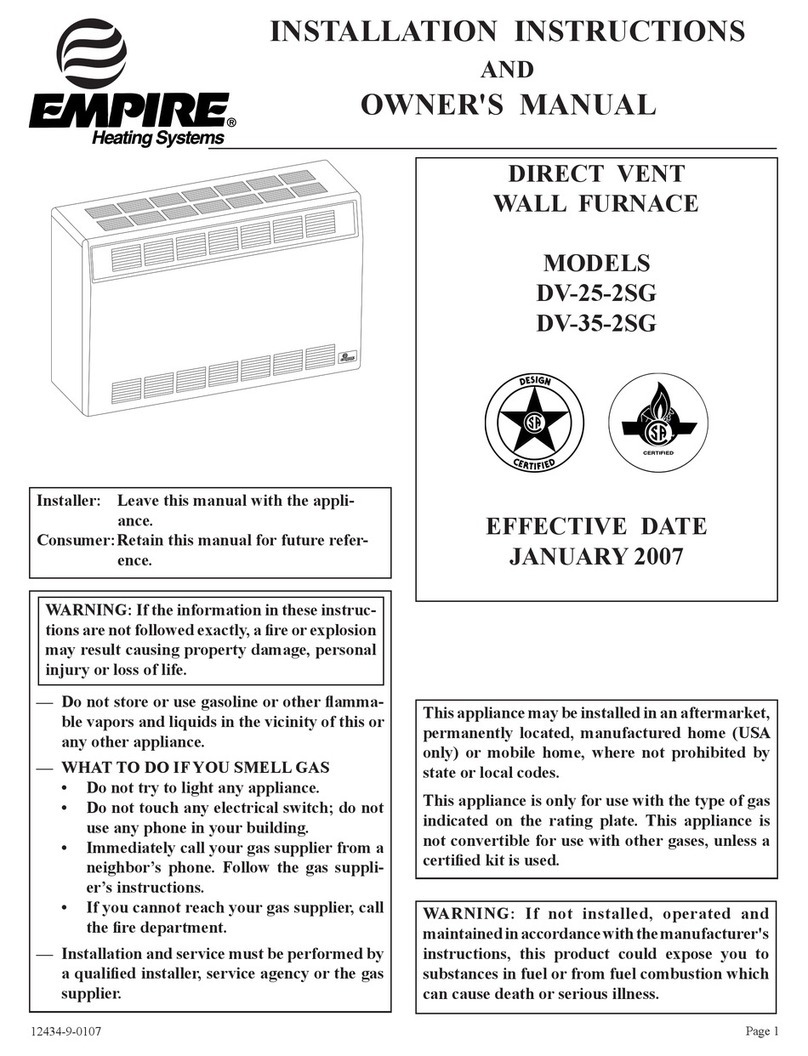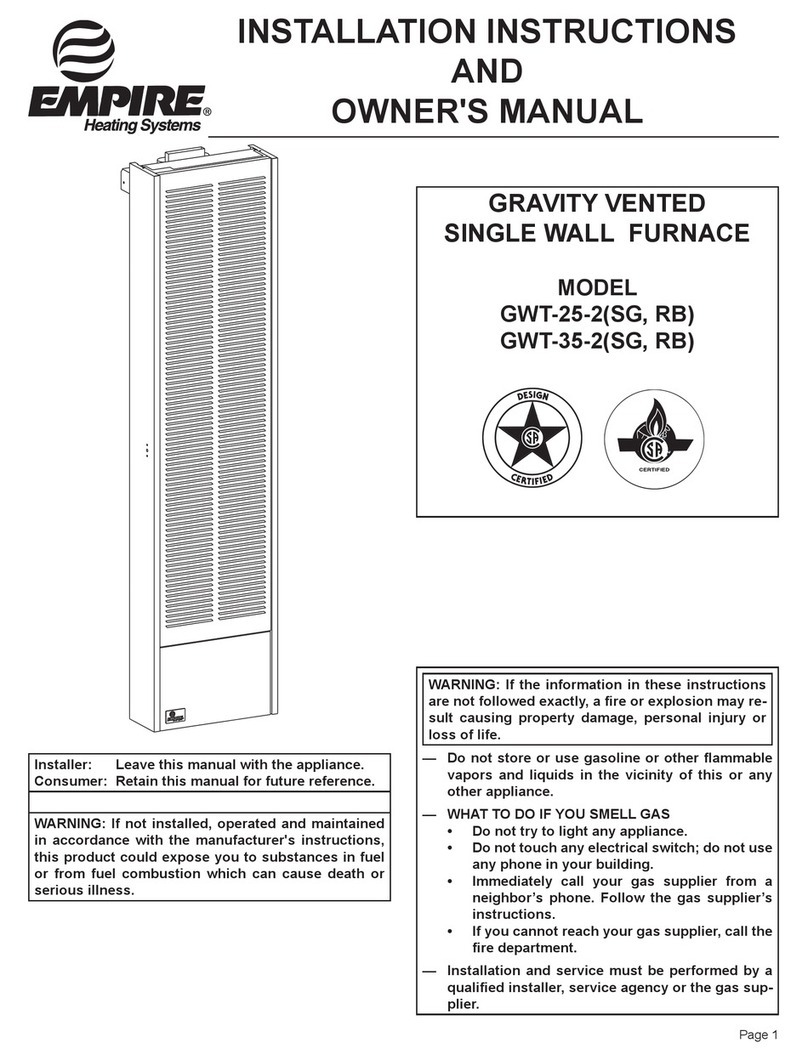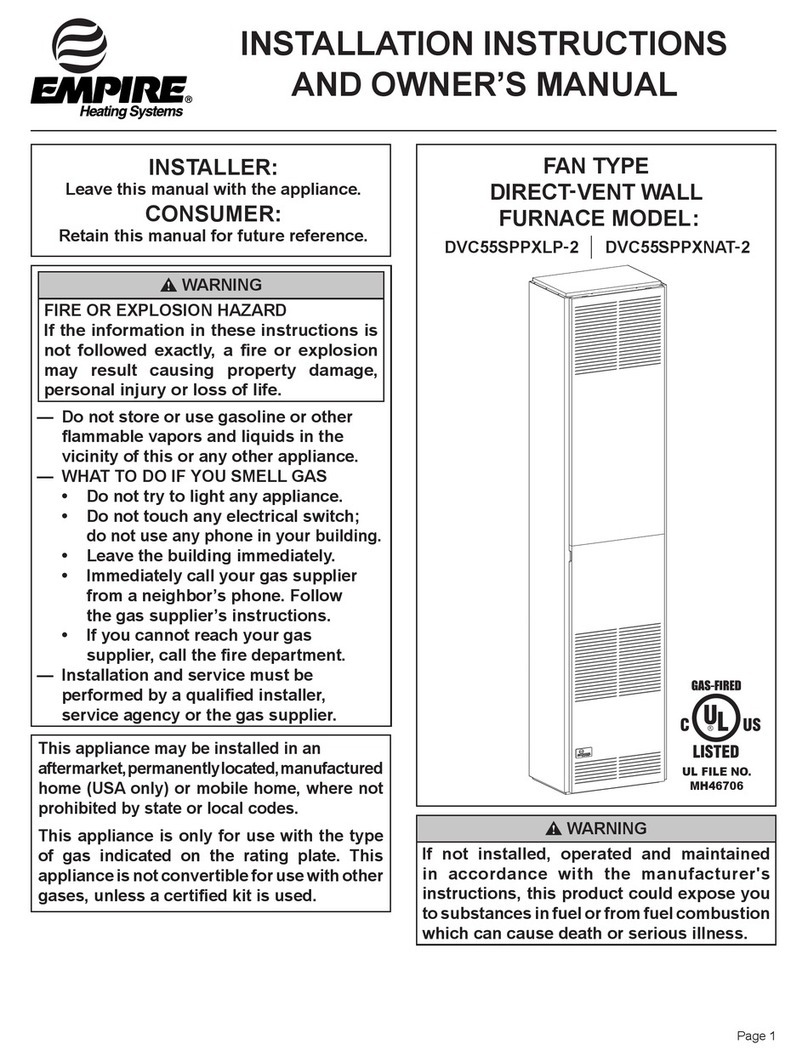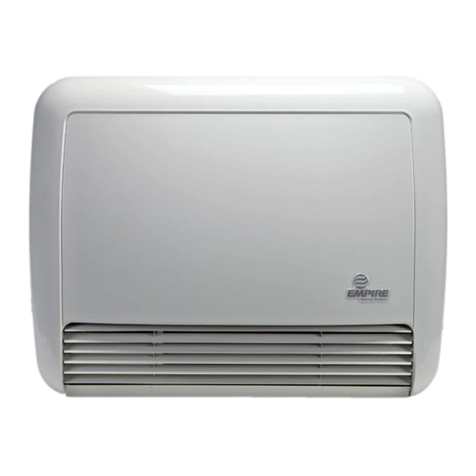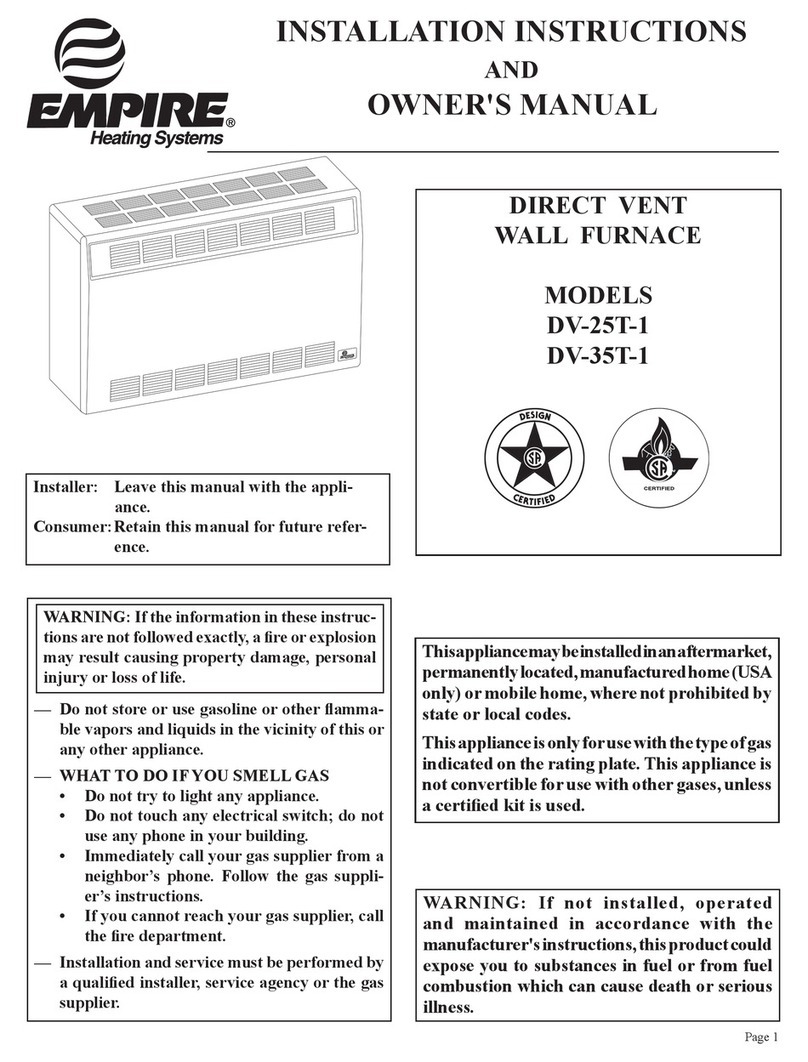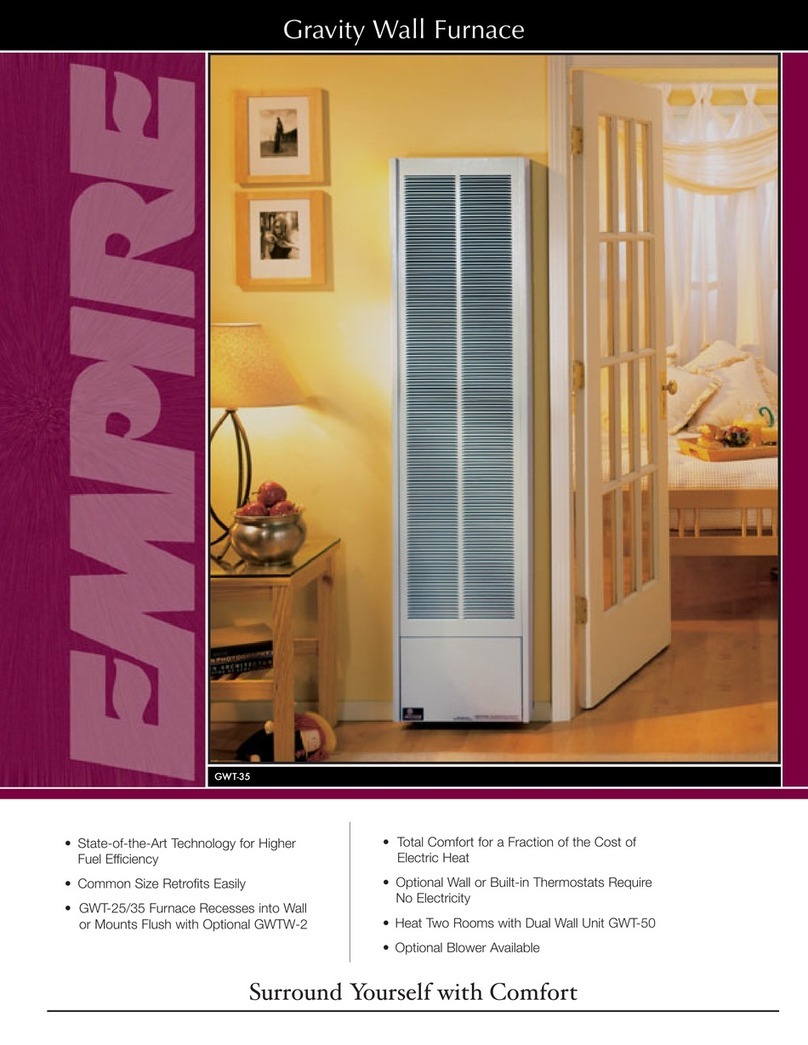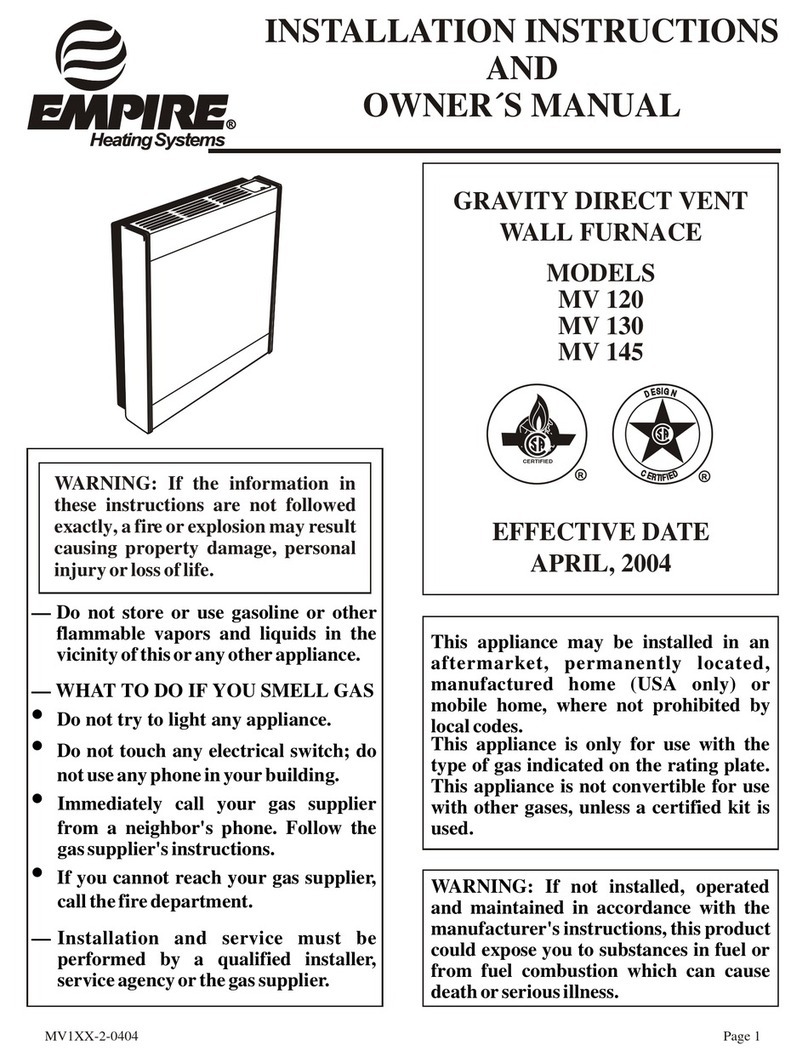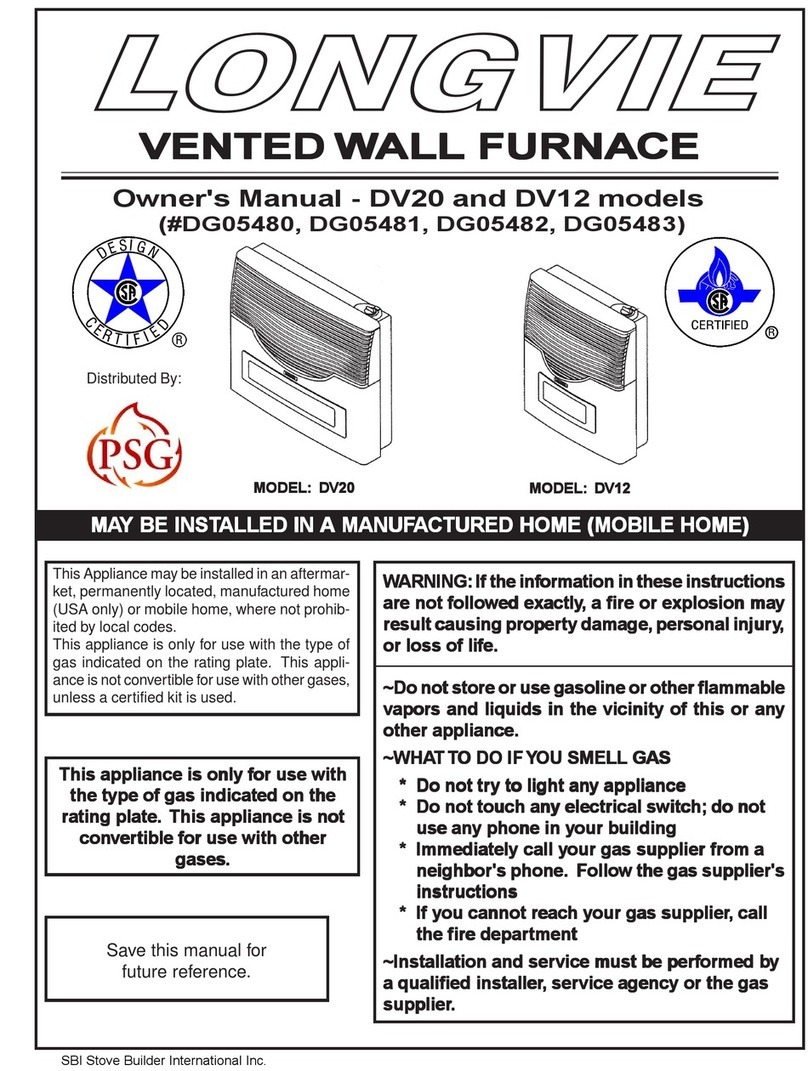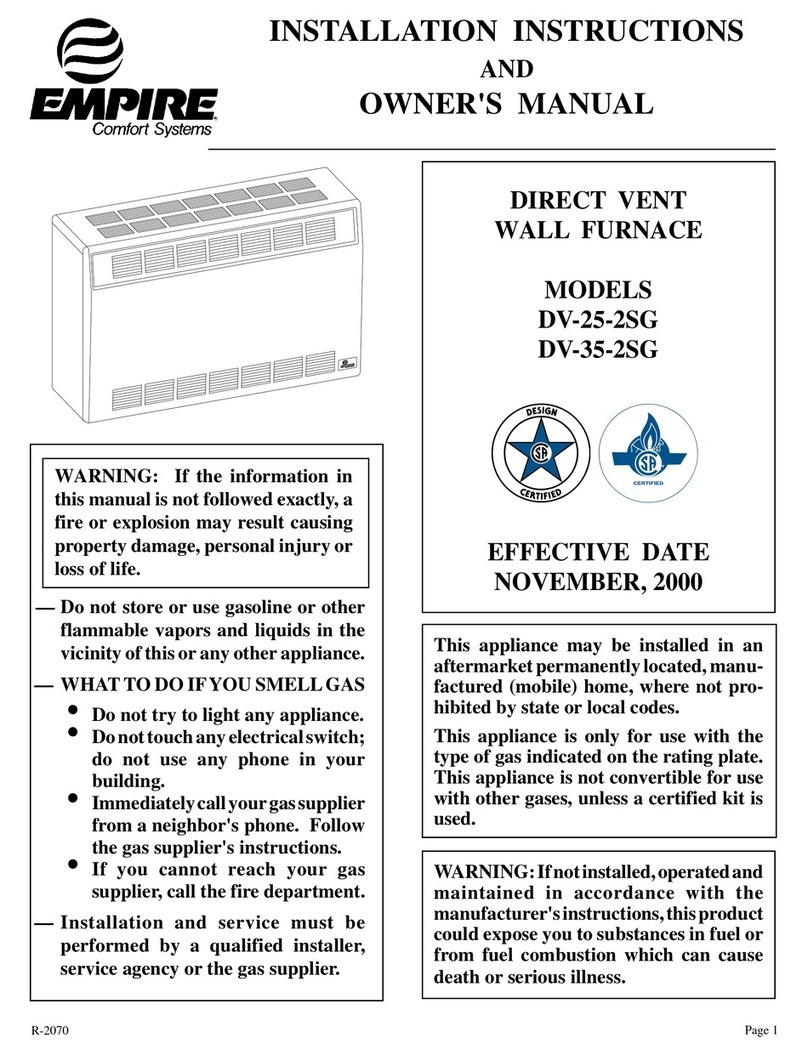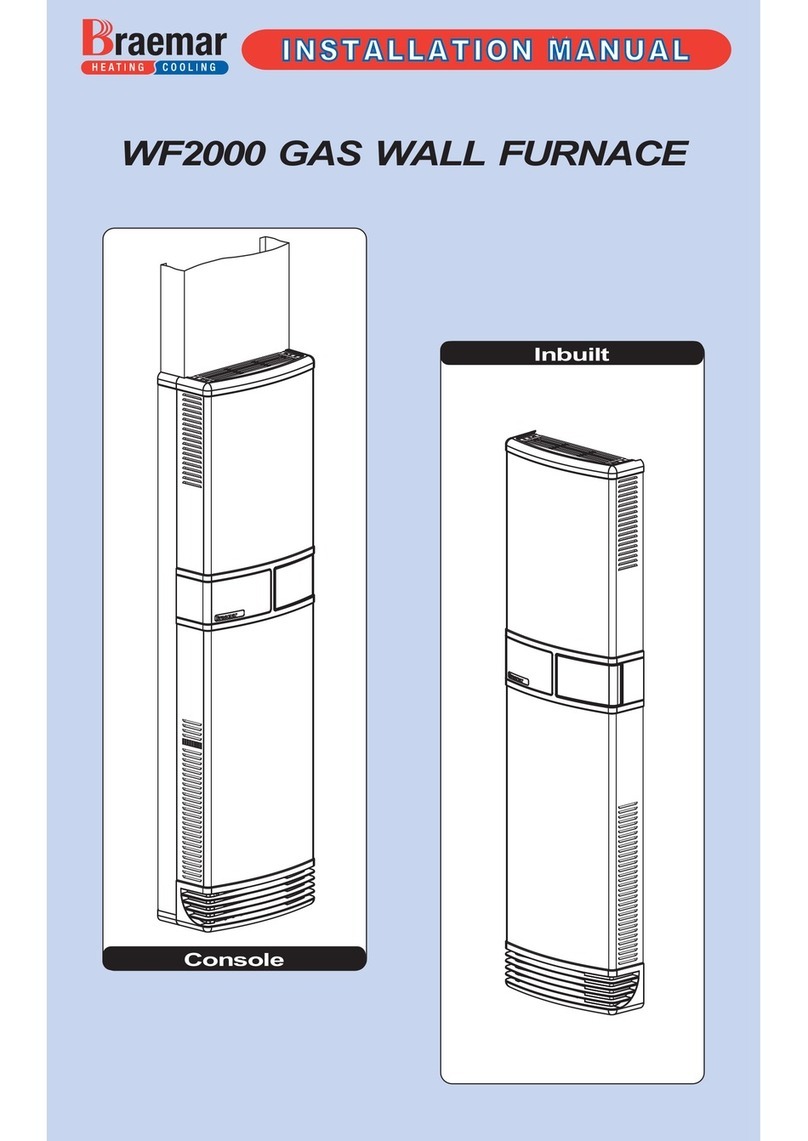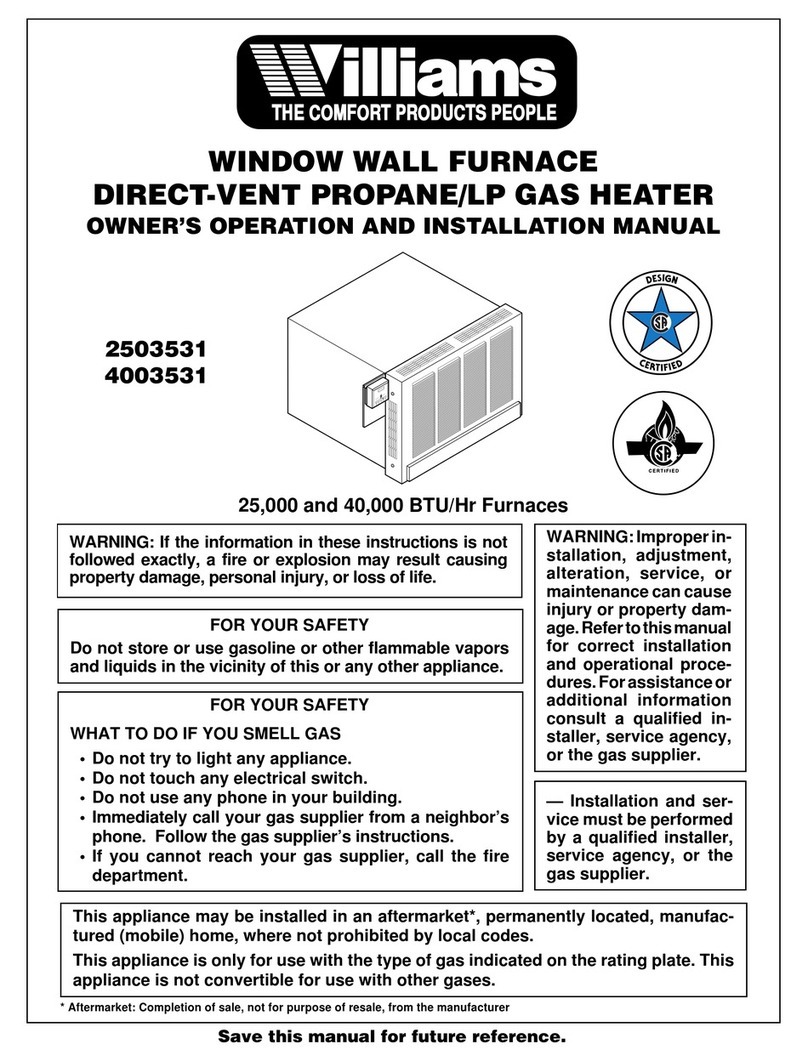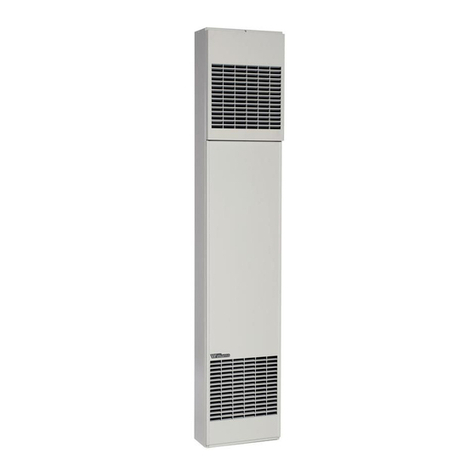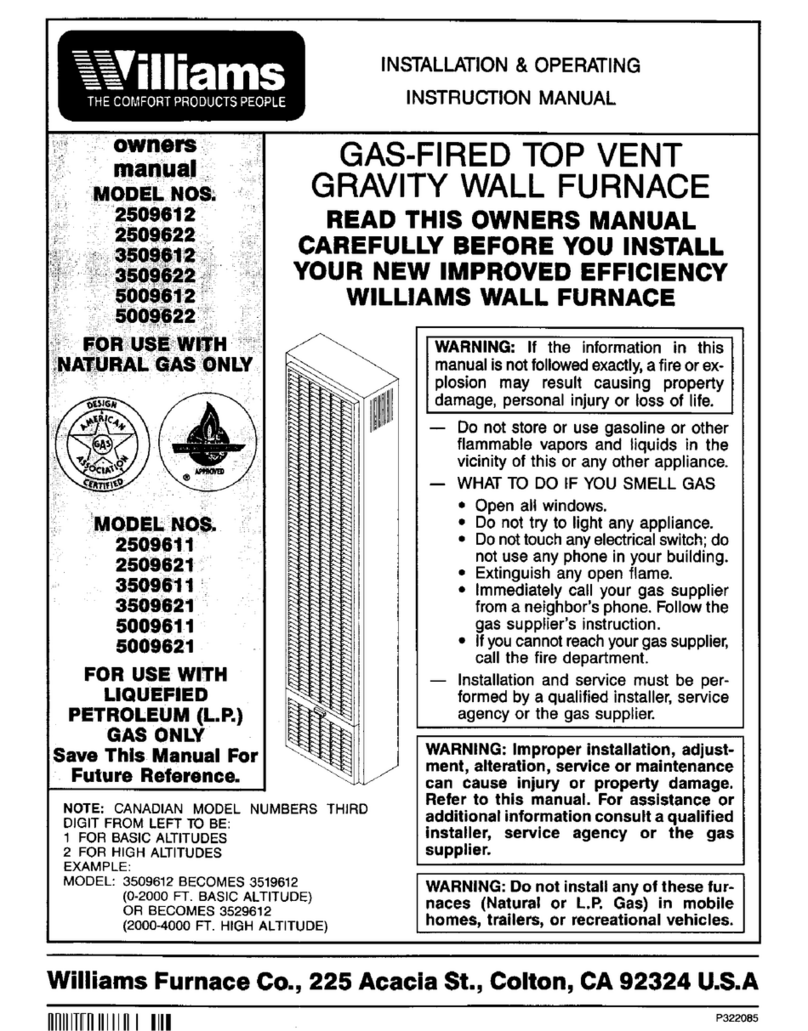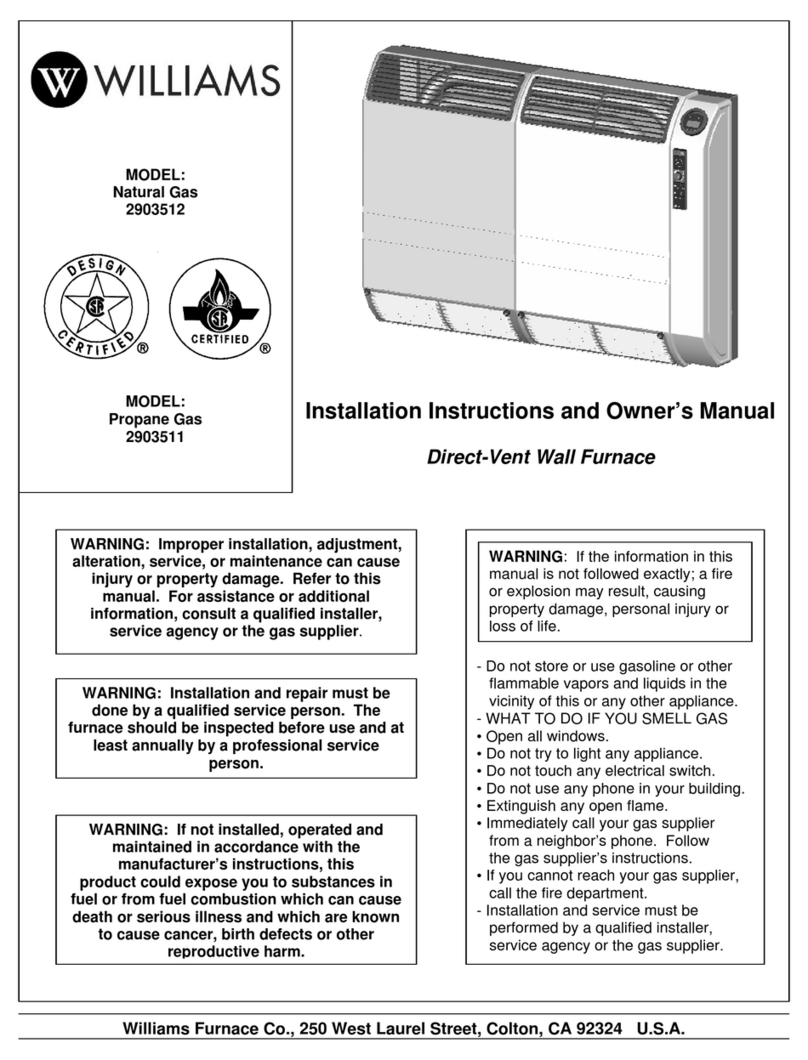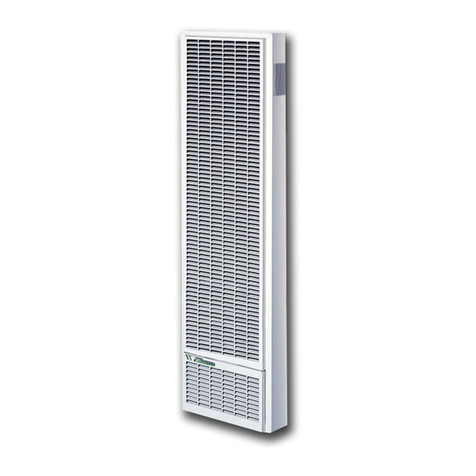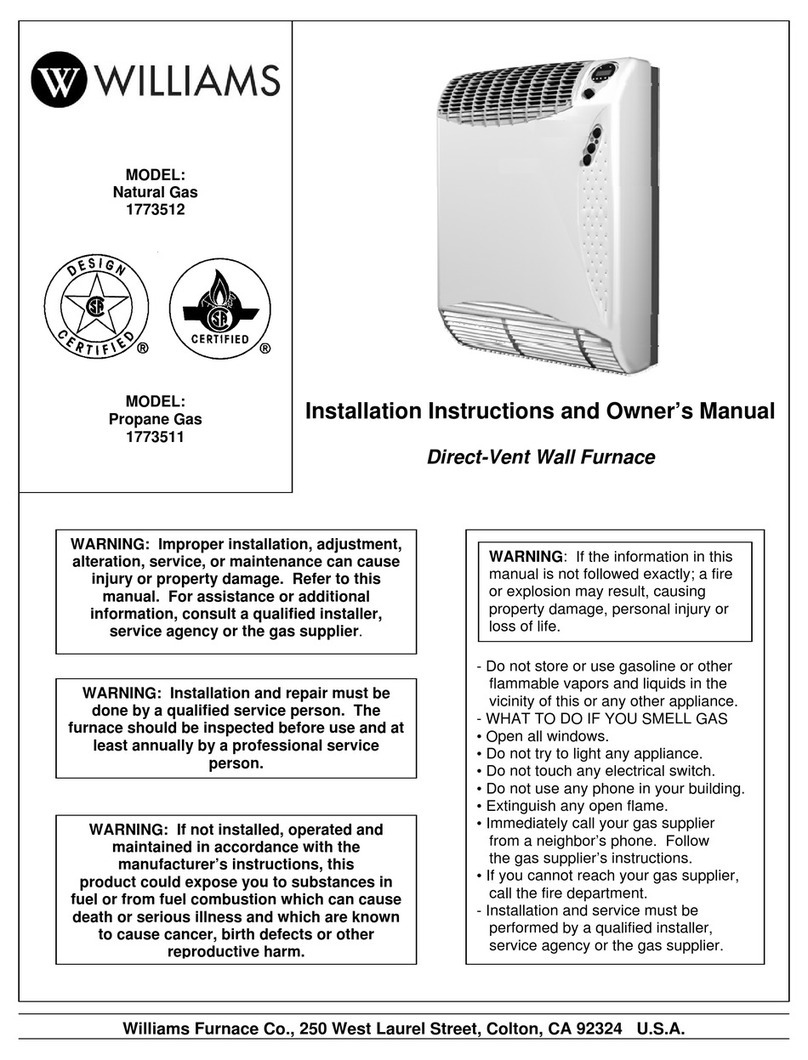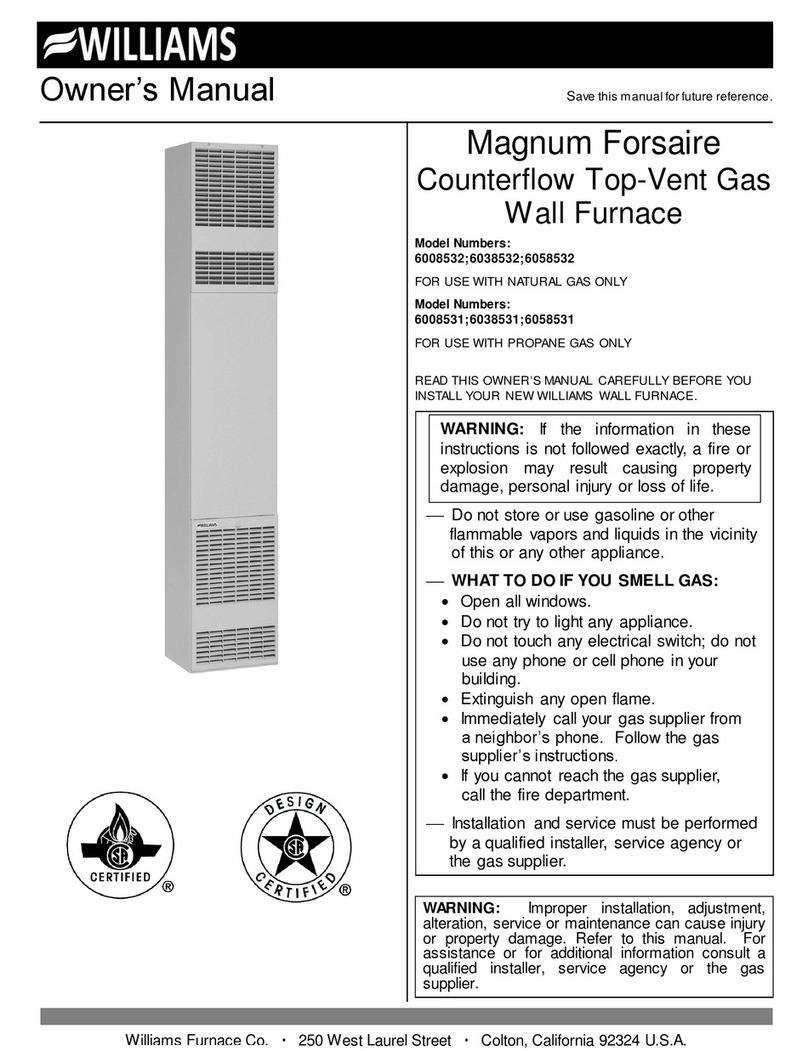
2
201842
DIRECT-VENT NATURAL GAS HEATER
THE COMFORT PRODUCTS PEOPLE
gases will result. Carbon monoxide
poisoning from backed-up flue gases
could occur. The State of California
lists carbon monoxide as a reproduc-
tive toxin under Proposition 65.
7. Never install the furnace
• in a recreational vehicle
• in an alcove
• on an inside wall
• as a fireplace insert
• in high traffic areas
• in windy or drafty areas
• behind a door or where an open door
would block normal air flow
8. Provide the following minimum fur-
nace clearances from furnace front
cover to combustibles (as viewed from
the front of furnace):
Below Front Cover: 6 inches
Adjoining Wall: 12 inches
Above Front Cover: 12 inches
Front: 8 feet
9. Do not obstruct the flow of combus-
tion and ventilation air in any way. Pro-
vide adequate clearances around air
openings into the combustion chamber
alongwith adequate accessibility clear-
ancefor servicing andproper operation.
10. Providethe followingminimum furnace
clearancesfromfurnacecabinet(portion
of cabinet extending into outside air, as
viewed from the rear of furnace):
Cabinet Back: 36 inches
Cabinet Sides: 6 inches
Cabinet Bottom: Must be high enough
off the ground to prevent snow, water,
leaves,or any other objects from block-
ing cabinet vents.
11. Always follow lighting instructions.
Never attempt to light burner with a
match or butane torch.
12. Do not run furnace
• where flammable liquids or vapors
are used or stored
• under dusty conditions
13. Do not use furnace asa cooking device.
14. Do not alter furnace orits controls.Any
change may create a safety hazard.
15. Do not use furnace if any part has been
under water. Immediately call a quali-
fied service person to inspect the fur-
nace and to replace any part of the con-
trol system and any gas control which
has been under water.
Carbon Monoxide Poisoning: Early signs of
carbon monoxide poisoning resemble the flu,
with headaches, dizziness, and/or nausea. If
you have these signs, the furnace may not be
workingproperly.Getfreshairatonce!Have
furnace serviced. Some people are more af-
fected by carbon monoxide than others. These
include pregnant women, people with heart or
lung disease or anemia, those under the influ-
ence of alcohol, and those at high altitudes.
NaturalGas:Naturalgasisodorless.Anodor-
makingagent is addedto natural gas.The odor
helps you detect a natural gas leak. However,
the odor added to natural gas can fade. Natural
gasmaybepresenteventhoughnoodorexists.
Makecertainyou readand understandall warn-
ings. Keep this manual for reference. It is your
guidetosafeandproperoperationofthisfurnace.
1. A qualified service person must install
furnace.
2. This appliance is only for use with the
typeof gas indicated onthe rating plate.
Thisappliance is not convertiblefor use
with other gases.
3. Use only natural gas. Do not convert
furnace to use different fuel type.
4. If you smell gas
• Shut off gas supply.
• Do not try to light any appliance.
• Donot touchanyelectrical switch;do
not use any phone in your building.
• Immediately call your gas supplier
from a neighbor’s phone. Follow the
gas supplier’s instructions.
• Ifyou cannot reach yourgas supplier,
call the fire department.
5. Do not block the flow of combustion
air (outside air) or heated air (room air)
to the furnace.
6. This furnace must have fresh air for
proper operation. If not, poor fuel com-
bustion and improper venting of flue
SAFETY
INFORMATION
WARNINGS
IMPORTANT: Read this owner’s
manual carefully and completely
beforetryingtoassemble,operate,
or service this furnace. Improper
use of this furnace can cause seri-
ousinjuryordeathfromburns,fire,
explosion, electrical shock, and
carbon monoxide poisoning.
DANGER: Carbon monoxide
poisoning may lead to death!
WARNING: Any change to
this heater or its controls can
be dangerous.
Do not place clothing or other
flammable material on or near
the appliance. Never place any
objects on the furnace.
Surfaceoffurnacebecomesvery
hot when running furnace. Keep
children and adults away from
hot surface to avoid burns or
clothingignition.Furnacewillre-
main hot for a time after shut-
down. Allow surface to cool be-
fore touching.
Due to high temperatures, the
appliance should be located out
oftrafficandawayfromfurniture
and draperies.
Carefully supervise young chil-
dren when they are in the same
room with furnace.
Turnofffurnaceandunplugandlet
cool before servicing. Unless you
need gas supply for testing, shut
off equipment shutoff valve before
servicing. Only a qualified service
person should service and repair
furnace and venting system.
Replace any safety screen or
guard removed for servicing be-
fore operating furnace.
You must keep control compart-
ments, burners, and circulating
airpassagesclean.Morefrequent
cleaning may be needed due to
excessive lint and dust from car-
peting, bedding material, etc.
Turnoffthegasvalveandunplug
before cleaning furnace.
